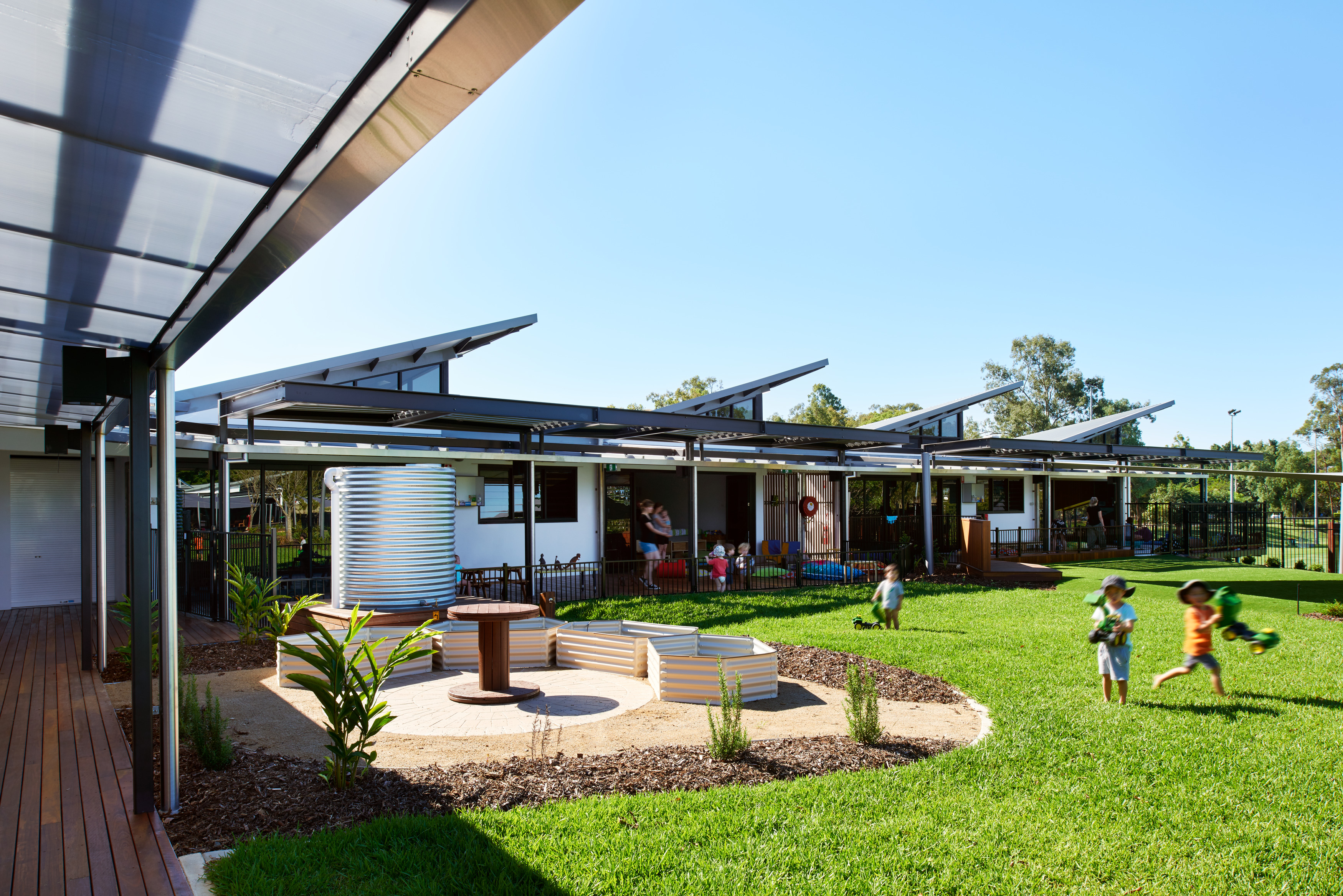
The Margaret Cribb Early Learning Centre is a childcare centre at the University of Queensland (UQ) St. Lucia campus Brisbane which operates under the famed Reggio Emilio early childcare education curriculum.
According to this curriculum, it is important for the learning environment to include visually-stimulating structural ‘art’ design, sensory stimulus in textures, and immersion within nature. The environment is a crucial factor and is even referred to as the ‘third teacher’.

To achieve this in the Queensland centre, in-depth research analysis of site plans and use of space was undertaken from existing Reggio Emilia education centres across the world. This was paired with research from early childhood experts who looked at behavioural development from 0-5 and what effect early experiences and the environment had on the brain, including the spatial ‘shell’ theory.
For example, some experts believe that for infants a concealed and sheltered ‘shell’ soft environment is needed with maximum supervision, progressing as a toddler to experiencing the ‘hard’ outside world where social interaction and coordination skills are developed.
“[It] has been an extraordinary journey working alongside educational experts in the re-calibration of building orientation and architectural design of this internationally revered Queensland University site – and naturally to be part of the evolution of the Reggio Emilia early childhood education centres globally,” says David Brian, dwp’s lead architect on the project.
KEY DESIGN ELEMENTS

- An external play area with larger and more flexible spaces
- Directives of room size, colour, texture, smell, touch, sight and sound to minimise sensory overload on the child’s brain function and productivity
- Windows placed and scaled from a child’s perspective
- Use of suspended fittings from cleanings helps reduce scale for children yet provides open and varied space
- Slight use of colour in the interiors and high volume open space modified to create smaller activity pockets
- Expansive natural interior finishes and interesting ceiling shapes provide interest
SUSTAINABILITY FEATURES

- Façade re-use of 9 linear km of timber power poles and recycled decking
- Extensive use of natural lighting, reducing the need for electric lights
- Use of ceiling fans to reduce air-conditioning load
- Solar energy panelling on the roof
- 2,000ml water storage tank underground for irrigation
- Solar hot water
- Plenty of natural landscape and mature trees for shade

